Javanese traditional house
Javanese traditional house (Javanese: ꦲꦺꦴꦩꦃꦠꦿꦝꦶꦱꦶꦪꦺꦴꦤꦭ꧀ꦗꦮ, romanized: Omah tradhisional Jawa) refers to the traditional vernacular houses of Javanese people in the island of Java, Indonesia.[1]
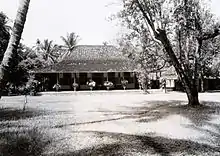
Landhuis Depan in Batavia is a Dutch Indies country houses which had completely assimilated with the Javanese house style.
Javanese hierarchy of roof form

An extended kampung-type roof in a house of Javanese common people.
.jpg.webp)
Limasan-type roof associated with higher status Javanese families appears in this house in a village near Salatiga.

Joglo-type roof appears in this residence of the head of a village in Jepara.
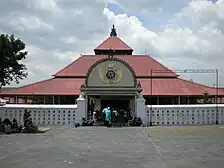
Tajug-type or Meru-type roof is always reserved for sacred spaces such as this mosque in Yogyakarta.
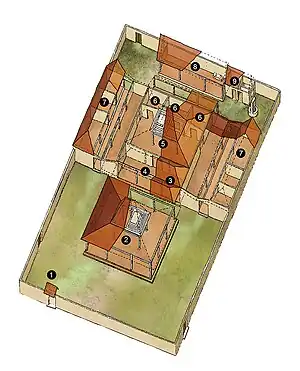
Layout of an ideal Javanese house compound.
Legend: 1. lawang pintu 2. pendopo 3. peringgitan 4. emperan 5. dalem 6. senthong 7. gandok 8. dapur (kitchen)
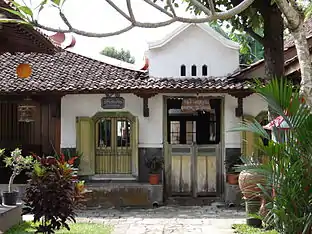
Side entrance to a gandok in the Omah UGM, Kotagede
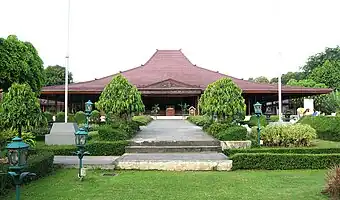
A joglo-type roof in Central Java pavilion, Taman Mini Indonesia Indah, modeled after Mangkunegaran palace
See also
References
- Gunawan Tjahjono 1998, p. 34.
Works cited
- Gunawan Tjahjono, ed. (1998). Architecture. Indonesian Heritage. Vol. 6. Singapore: Archipelago Press. ISBN 981-3018-30-5.
- Het Indische bouwen: architectuur en stedebouw in Indonesie : Dutch and Indisch architecture 1800–1950. Helmond: Gemeentemuseum Helmond. 1990.
- Schoppert, P.; Damais, S. (1997). Java Style. Singapore: Didier Millet. ISBN 9625932321.
This article is issued from Wikipedia. The text is licensed under Creative Commons - Attribution - Sharealike. Additional terms may apply for the media files.